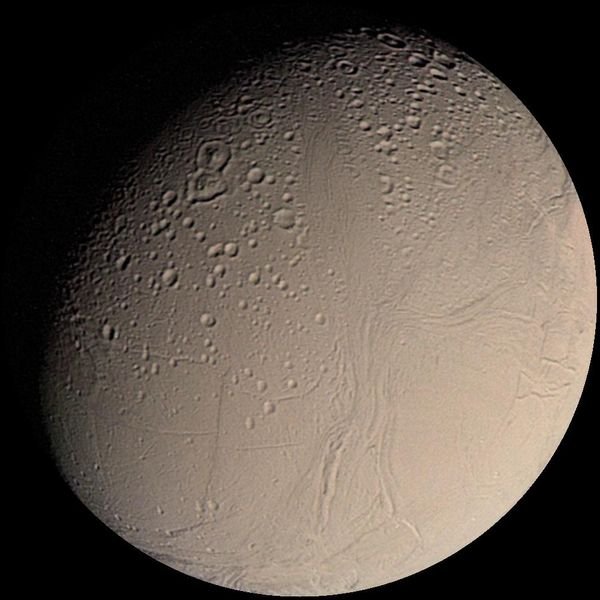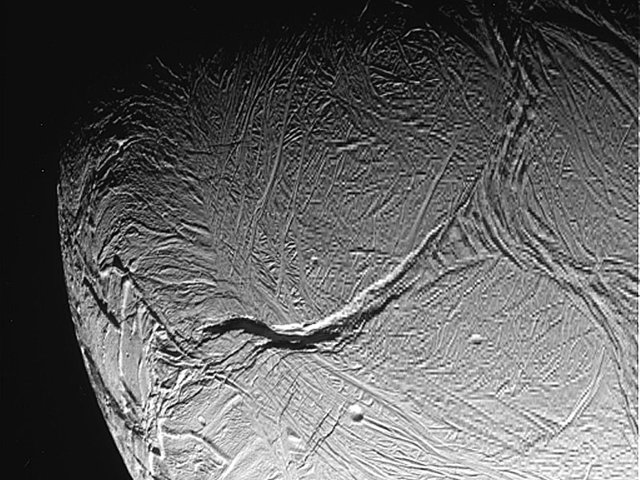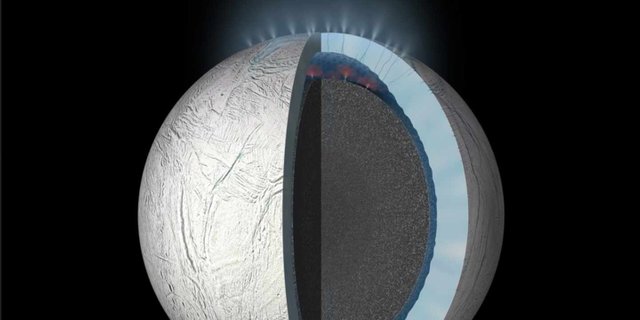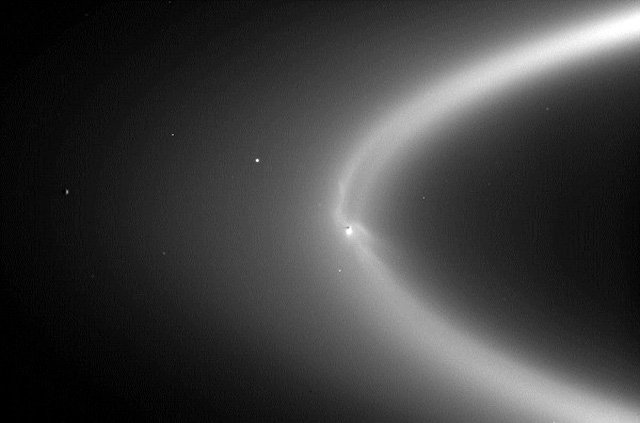Is there life on Enceladus?

Fuente
Enceladus was discovered by William Herschel on August 28, 1789, although its name was given by John Herschel in his 1847 publication of the results of his astronomical observations at the Cape of Good Hope.
It was just another satellite of the planet Saturn whose only known data were the characteristics of its orbit and an estimate of its mass, density and albedo until the Voyager probes passed very close to it in 1980 and gave precise characteristics of its surface and conditions..
Its size is approximately 500 kms in diameter, being the sixth satellite in terms of size of the planet and is located at a distance of 238 thousand kms from the center of the planet, being the fourteenth farthest from it.
Its surface is entirely covered by a layer of ice, which causes it to reflect almost all sunlight, and the surface temperature is -198 degrees at midday..
In 2005, the Cassini/Huygens probe performed several flybys that revealed interesting details of this celestial body, which initiated further investigations of it, as it became a prime candidate for the possibility of life on this celestial body..
The probe discovered water-rich plumes at the south pole, cryovolcanoes near this point, similar to terrestrial geysers, that spew jets of water vapor into space, other volatile substances, and solid material including sodium chloride crystals and ice particles. They believe that the subsurface ocean is kept liquid by the existence of a gifted active core that produces heat and generates intense volcanic and hydrothermal activity.
It has been discovered that there are more than a hundred of these and that as a result of the action, as in a terrestrial winter, snow falls on the surface..

Fuente
The probe also revealed that there is a great geological activity in it, becoming the fourth celestial body in the solar system with active volcanism, the other three being Earth, Triton and Venus, and the most interesting thing is that organic compounds have been discovered in the jets expelled by the volcanoes, including hydrogen particles..
In 2014 NASA scientists reported having found evidence of the presence at the South Pole of a large subsurface ocean of water about ten kilometers thick, and years later they asserted that the liquid ocean in the interior contains several of the elements necessary for the formation of life and even the existence of small microbial ecosystems..

Fuente
These statements are based on the fact that there are complex molecules that form long carbon chains with oxygen and hydrogen atoms..
Other scientists make similar claims since the subway ocean of water brings together the basic requirements of life as we know it, which are: water in a liquid state, a source of energy and complex molecules based on carbon chemistry..
Nozair Khawaja from the University of Berlin hypothesizes that the heat of the nucleus can interact with nitrogen- and oxygen-rich organic compounds to form amino acids, the basic building block of the life forms we know on Earth. Amino acids can form proteins, and these can serve as the basis for life..

Fuente
The truth of the matter is that the indications about the possibility of microbial life on the satellite are very strong, so a deeper exploration would be needed to confirm it, although it will not be possible in recent years, since it is not until 2026 that NASA plans to launch a specific mission to explore Titan, Saturn's largest moon, the only one where lakes and rivers in liquid state and organic compounds have been found, but not based on water but on methane..
https://es.wikipedia.org/wiki/Enc%C3%A9lado_(sat%C3%A9lite)